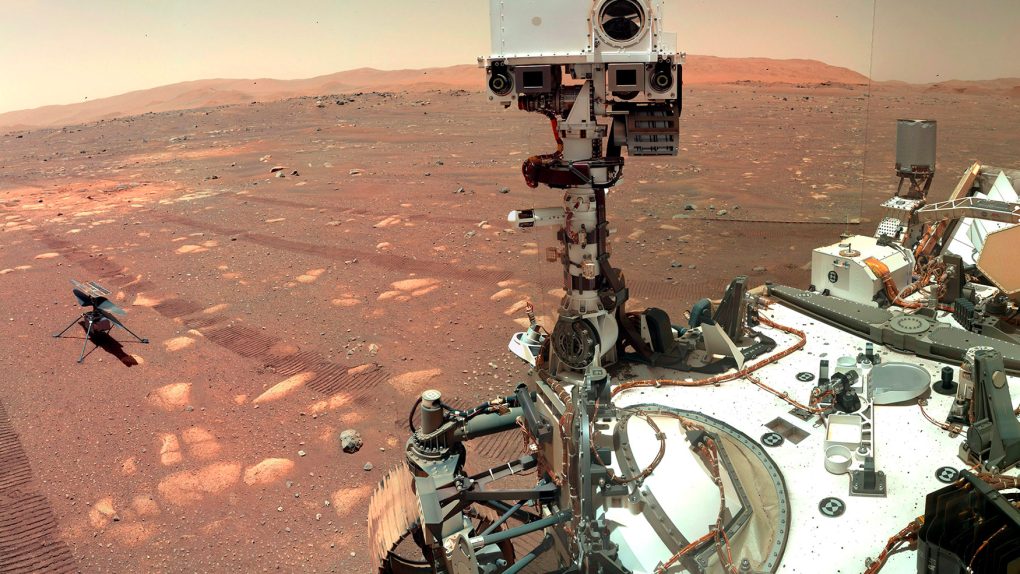While looking out over the Martian surface, NASA’s Perseverance rover captured a strange and intriguing “blue” sunset over Mars, which could teach scientists more about how light scattering happens in the Martian atmosphere.
The image was shared on Twitter, and while it doesn’t look as blue as you might expect from the name, it does have a blue-greenish hue, which is why so many people are referring to it as a “blue” sunset. However, it’s not the color of the Martian sunset that scientists are focused on.
Taken on the 842nd Sol, the image will do a lot to help scientists learn more about light scattering, which is the way that light behaves when it interacts with something that contains particles or when it interacts with the boundary between two different mediums.
The hope is that this image of the “blue” sunset on Mars will help scientists learn a bit more about how the light reacts with the Martian atmosphere compared to how this phenomenon occurs here on Earth. It could help us better understand the state of Mars’ atmosphere and maybe even learn more about how that atmosphere is evolving going forward if the way light scatters changes in future images.
We’ve also seen simulations of what Martian sunrises might look like, showcasing the same blue tint as the blue sunset image captured by Perseverance this month.
It really all comes down to understanding how the sun’s rays interact directly with the Martian atmosphere compared to Earth’s. See, here on Earth, the blue light scatters more throughout the day, causing the blue appearance of the sky. On Earth, the red and orange lights scatter more throughout the sunset and sunrise, giving it the iconic look that we’ve seen in so many photographs.
On Mars, though, things are a bit different. During the day, light scattered differently on Mars, giving the Martian sky a reddish hue. As such, when the light begins to fade, and the Sun moves closer to the horizon, the blue light shines through more, giving Mars these blue sunsets.
“Just as colors are made more dramatic in sunsets on Earth, Martian sunsets would appear bluish to human observers watching from the red planet. Fine dust makes the blue near the Sun’s part of the sky much more prominent, while normal daylight makes the Red Planet’s familiar rusty dust color more prominent,” a NASA post on Mars explains.
Further, NASA says that images of Mars during twilight and sunsets help scientists determine just how high into the atmosphere the Martian dust extends, allowing them to look for ice and dust clouds.








